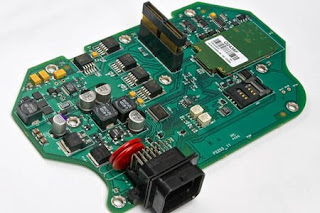
Blu-ray also known as Blu-ray DISC(BD) is a name of a next generation optical disc video recording format jointly developed by nine leading consumer electronics companies(Hitachi,LG, Matsuhita (Panasonic), pioneer, philips, samsung,sharp, sony, and Thomson). The format was developed to enable recording, rewriting and play back of high definition video(HDTV). Blu-ray makes it possible to record over 2 hours of digital high definition video(HDTV) or more than 13 hours of standard-definition video(SDTV/VHS Quality) on a 27 GB disc. there are also plans for higher capacity discs that are expected to hold up to 50 gb of data. the nine companies announced the joint establishment of the specification for blu- ray disc in feburary 19 2002 and after the hard work of the professionals of those companies it is in the market from April 10, 2003. An interesting factor about the blu-ray is that in near future we can find the collection Blu-ray disc of movies in the market as we get the collection of MP3 files.






 So when any user makes a call first it is recieved by BTS and then it is transferred to BSC and then it is transferred to MSC after that MSC checks whether the called party is Mobile subscriber or PSTN subscribers and routes the call accordingly if the called party is mobile subsciber then the same reverse process is accomplished.
So when any user makes a call first it is recieved by BTS and then it is transferred to BSC and then it is transferred to MSC after that MSC checks whether the called party is Mobile subscriber or PSTN subscribers and routes the call accordingly if the called party is mobile subsciber then the same reverse process is accomplished.








 WAN can be group of LAN, unlike LAN WAN are not owned by a single body or a organization but rather they are managed by a group of organizations. The network structure of WAN is much complex and the consists of Routers and switches.
WAN can be group of LAN, unlike LAN WAN are not owned by a single body or a organization but rather they are managed by a group of organizations. The network structure of WAN is much complex and the consists of Routers and switches.